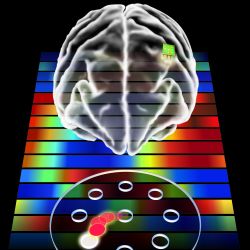
Those who learn by repetition rely on “muscle memory,” a sense that practice trains muscles to perform specific actions without thought. But does muscle memory exist if no actual muscles are involved? According to a paper published in the peer-reviewed journal PLoS Biology, the answer is a clear “yes.” These findings strengthen hope for the future of brain-controlled prosthetics, or “neuroprosthetics”, and may aid the development of robotic body extensions whose control is truly intuitive.
The paper is entitled “Emergence of a Stable Cortical Map for Neuroprosthetic Control,” by Karunesh Ganguly and Jose M. Carmena of the Department of Electrical Engineering and Computer Science at the University of California at Berkeley.
The field of brain-machine interfaces got its start in the 1970s and accelerated tremendously in the 1990s with the demonstration of simple brain-controlled devices. In 1999 a research team was able to decode electrical impulses from a cat’s brain to recreate what it saw on a screen; by early 2008 the field had advanced to allow a monkey to direct a robot to feed itself, using only thoughts.
In the newly reported UC Berkeley experiments, researchers implanted sensors to monitor a neural ensemble (group of neurons) in two monkeys’ brains and directed them to use mind control to move an on-screen cursor to a target. Activity of the neural ensembles went to a “decoder,” which serves as an electronic spinal cord to translate neural activity into actions. The monkeys mastered the task within four or five days, and performed it consistently over the next two weeks.
|
|
“The question is whether that decoder has to have a biomimetic structure or not — if it has to represent the way that your neurons control movement,” Dr. Carmena said. But what he and Dr. Ganguly discovered was that even with other decoder structures, “The brain can learn it, and control a cursor or a robotic arm that’s not part of your own body, in real time. The brain can actually generate a memory of something that’s not part of your body’s schema.”
Besides the obvious application of helping people regain mobility, the paper will have repercussions that will for brain science in general, Dr. Carmena said. “It’s a very powerful tool to study how the brain works. Forget about prosthesis for a moment. We have a simplification of the actuator, removing sensory noise and such. But we have a real brain in full operation controlling the device, and we have a complete decoder.”
With parallel, ongoing improvements in robotic science, prosthetic body parts may soon be available that not only act as a person’s own, but that are learned and controlled naturally by motor memory.
Tom Geller is an Oberlin, Ohio-based science, technology, and business writer.



Join the Discussion (0)
Become a Member or Sign In to Post a Comment